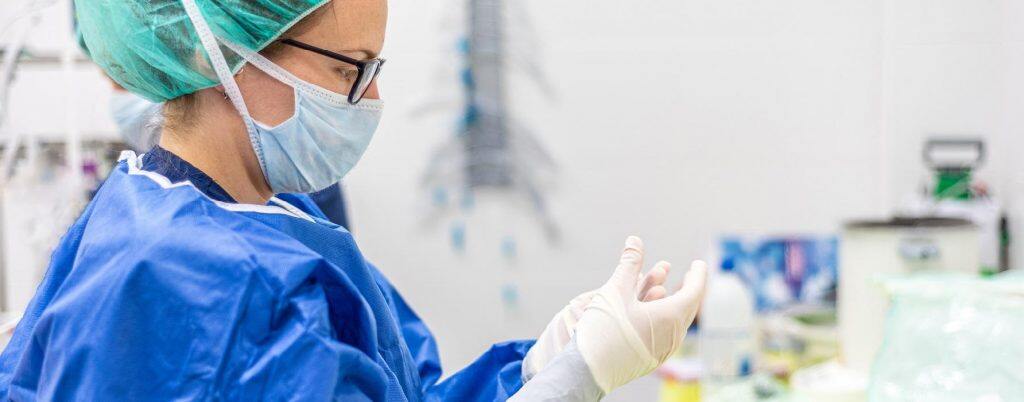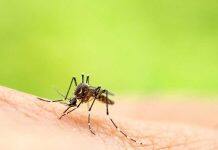The Dean of the Faculty of Medicine, Bruno Riou, has been the AP-HP’s Crisis Medical Director since last March.


On the front lines of hospitals’ battle against the coronavirus pandemic, he looks back on his weeks of struggle and the mobilisation of the student healthcare community.
As we gradually emerge from the lockdown measures taken in mid-March, what is the current situation on the hospital front?
Bruno Riou: Each day, the number of people hospitalised, especially in intensive care, is falling. Fewer and fewer new patients are being diagnosed and it has become common for emergency departments to see no new Covid-19 cases for 24 hours. Emergency calls have reverted to the previous situation but with many patients still hospitalized, some of whom have been in intensive care for several weeks, the number of deaths is increasing very steadily, although the rate is also slowing down.
The epidemic is therefore declining sharply in the two regions that have been most affected, the Grand Est and Île-de-France, but also in all other French regions. In the absence of specific treatment and vaccination, all the measures taken (lockdown, shielding, social distancing, wearing of masks, and isolation of patients) have caused the epidemic to decline. However, the virus is still circulating and new cases, sometimes in clusters, are still appearing. The situation has improved considerably, but the epidemic is not over, and the pandemic continues in other countries.
At the height of the crisis, how did things play out? Could things have gone differently?
B. R.: In Île-de-France, the number of ICU beds rose in recent months from 1,189 to 2,945 (+248%) thanks to the mobilisation of the entire healthcare system and all healthcare personnel.
But we did indeed come close to the unthinkable. We were able to offer resuscitation to all those who needed it, without changing our access criteria before the crisis, thanks to this extraordinary mobilization, but also to two external factors that played a crucial role at the height of the crisis. On one hand, we saw reinforcements of medical and paramedical personnel from other regions, and secondly the transfer of over 200 resuscitation patients to other regions by various means (helicopters, planes, trains). The use of TGVs (high-speed trains), which was initiated in the East of France, is an international first allowing massive transfers (one TGV train = 24 patients) to less effected regions in excellent safety conditions and over long distances. The idea had been tested by a full-scale exercise after the terrorist attacks of 13 November 2015, resulting from an exemplary collaboration between the SAMU and the SNCF.
What is so special about this virus that you are still fighting every day?
B. R.: This virus, which is quite contagious, is not particularly dangerous in terms of its mortality rate, which is probably between 0.5 and 1%. A mortality rate very far from that of Ebola (over 50%) or even that of SARS (about 13%) or MERS-CoV (about 35%), both of which are well-known coronaviruses. However, this rate for overall mortality of Covid-19 in a population says nothing about the individual risk, which is almost zero in children and very high for older patients with co-morbidities.
To repeat a frequent comparison, mortality is ten times higher than the classical influenza epidemic (about 0.1%). The problem is that this coronavirus is coming up against a population that has never been affected, unlike influenza, and we do not yet have a vaccine. Consequently, if half of French men and women were to be contaminated (hypothesis of the famous “herd immunity”), a 1% mortality rate would mean an appalling death toll, of the order of 300,000 deaths. Since approximately 5% of Covid-19 patients need resuscitation, our services would have been totally overwhelmed. However, resuscitation saves about 60-65% of the most seriously ill patients, which is considerable. Not being able to use resuscitation means consenting to excess mortality.
The medical and paramedical student community has been particularly involved in this struggle. To what extent has their mobilisation helped?
B. R.: The mobilisation of healthcare students has been incredible and essential. Nearly 4,500 students were recruited to fill nursing assistant or orderly positions, receiving brief training on the AP-HP Picpus campus.
Early on, they were mobilised to boost UAS-Centre 15 at a time when it was facing a considerable increase in calls. Others were recruited on the Covidom telemedicine platform to monitor more than 50,000 patients at home.
The entire student healthcare community was involved: medicine, dentistry, pharmacy as well as all paramedical fields, while those who had a nursing diploma went back to their former profession. More recently, healthcare students have been integrated into the COVISAN teams who visit the homes of Covid-19 patients for contact-tracing. Students from other faculties have come to reinforce the Covid-19 university research teams or to participate in clinical research work within the framework of the many studies initiated. Without this extraordinary effort, things would have been very different, and we should offer them our wholehearted thanks. Their mobilisation has been commensurate with their vocation.
Will their mobilisation be recognized as part of their training?
B. R.: As President of the Conference of Ile-de-France Healthcare Deans, I have tried to apply several principles: to recognise that their actions at the heart of the crisis and with Covid-19 patients has contributed to their training as caregivers; to ensure that no student suffers from difficulties linked to this crisis and finally; to do everything possible to facilitate their graduation or the transition to the next year of their healthcare studies by adapting teaching to the circumstances. Teaching staff has been able to mobilise and show a significant capacity for innovation. For example, final year medical students, who will have to take the national ranking examination (ECN) to determine their future speciality and region of practice, were able to continue attending attend reviews organised by the Faculty of Medicine in the form of videoconferences involving several hundred participants.
For more information or career opportunities, please contact Sorbonne University.








































